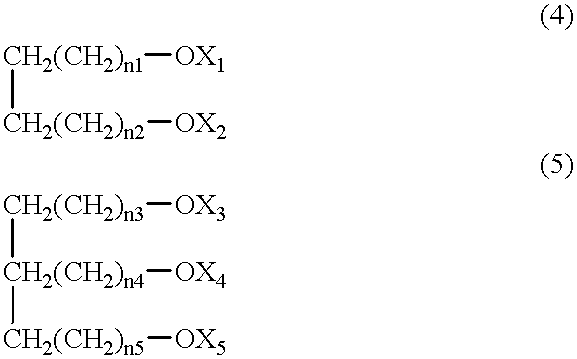Process for preparing formed item of aliphatic polyester and formed item prepared by the process
- Summary
- Abstract
- Description
- Claims
- Application Information
AI Technical Summary
Benefits of technology
Problems solved by technology
Method used
Image
Examples
preparation example
[0162] Preparation processes of aliphatic polyester which can be used for the examples and comparative examples will be illustrated below.
[0163] Part in the descriptions are part by weight.
[0164] The average molecular weight (weight average molecular weight) were measured by gel permeation chromatography under following conditions using polystyrene as a reference.
[0165] Apparatus: Shimadzu LC-10AD
[0166] Detector: Shimadzu R1D-6A
[0167] Column: Hitachi Chemical Co. GL-S350DT-5 and GL-S350DT-5
[0168] Solvent: Chloroform
[0169] Concentration: 1%
[0170] Amount of charge: 20 .mu.l
preparation example 1
[0171] Preparation of Poly-L-Lactic Acid (Polymer A)
[0172] To a thick walled cylindrical stainless steel reaction vessel equipped with a stirrer, 100 parts of L-lactide, 0.01 part of stannous octoate and 0.03 part of lauryl alcohol were charged, deaerated under vacuum for 2 hours and successively substituted with nitrogen. The mixture was heated with stirring in a nitrogen atmosphere at 200.degree. C. for 3 hours. While maintaining the intact temperature, the reaction vessel was gradually evacuated to 3 mmHg with a vacuum pump by way of a vent and receiver. After an hour from the initiation of deaeration, distillation of the monomer and low molecular weight volatiles were ceased. The reaction vessel was substituted with nitrogen. The product polymer was discharged in the form of a strand from the bottom of the reaction vessel and cut into pellets. Poly-L-lactic acid (Polymer A) thus obtained had a weight average molecular weight of 136,000.
preparation example 2
[0173] Preparation of Poly-L-Lactic Acid (Polymer B)
[0174] In a 100 liter reaction vessel equipped with a Dien-Stark trap, 10 kg of 90%-L-lactic acid was heated with stirring at 150.degree. C. / 50 mmHg for 3 hours while distilling out water, 6.2 g of tin powder was added, and stirring was further continued at 150.degree. C. / 30 mmHg for 2 hours to obtain an oligomer. To the oligomer, 28.8 g of tin powder and 21.1 kg of diphenyl ether were added, an azeotropic dehydration reaction was carried out at 150.degree. C. / 35 mmHg, distilled water and solvent were separated in the water separator, and solvent alone was returned to the reaction vessel. After 2 hours, the solvent line was reassembled so as to return the solvent to the reaction vessel by way of a column packed with 46 kg of molecular sieve 3A and the reaction was carried out at 150.degree. C. / 35 mmHg for 40 hours to obtain a solution of poly-L-lactic acid having a average molecular weight of 146,000. To the solution, 44 kg of anhy...
PUM
| Property | Measurement | Unit |
|---|---|---|
| Temperature | aaaaa | aaaaa |
| Percent by mass | aaaaa | aaaaa |
| Percent by mass | aaaaa | aaaaa |
Abstract
Description
Claims
Application Information
 Login to View More
Login to View More - R&D
- Intellectual Property
- Life Sciences
- Materials
- Tech Scout
- Unparalleled Data Quality
- Higher Quality Content
- 60% Fewer Hallucinations
Browse by: Latest US Patents, China's latest patents, Technical Efficacy Thesaurus, Application Domain, Technology Topic, Popular Technical Reports.
© 2025 PatSnap. All rights reserved.Legal|Privacy policy|Modern Slavery Act Transparency Statement|Sitemap|About US| Contact US: help@patsnap.com

